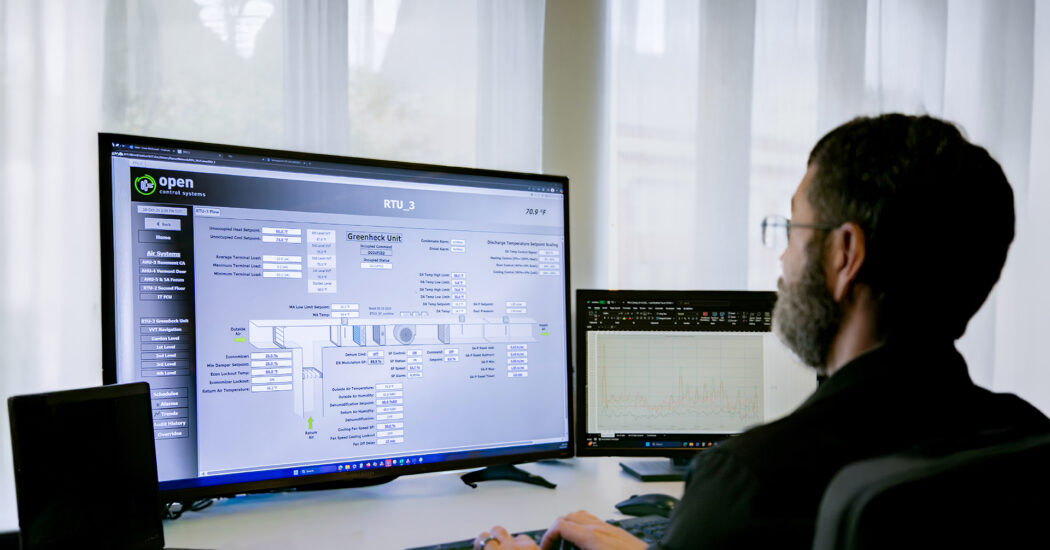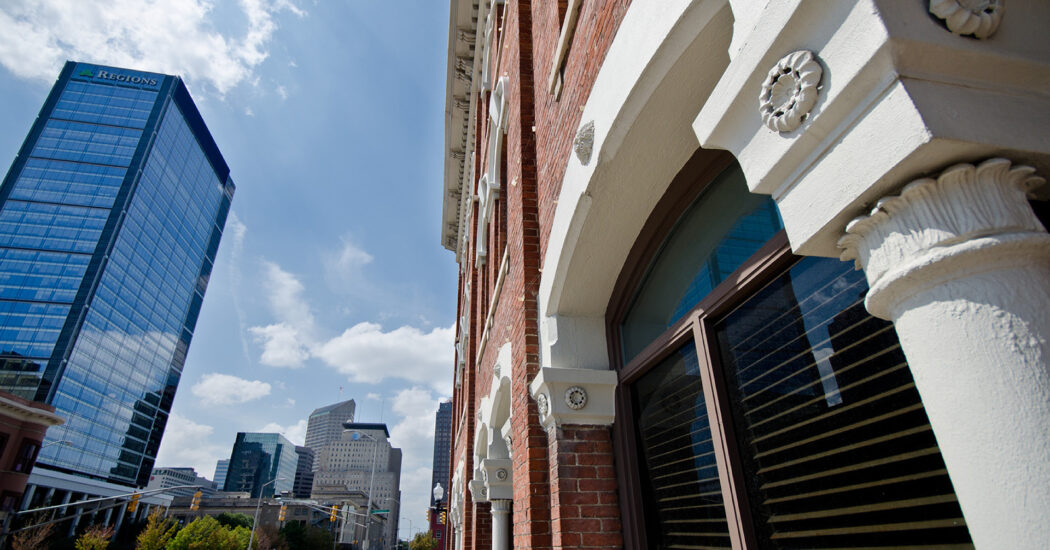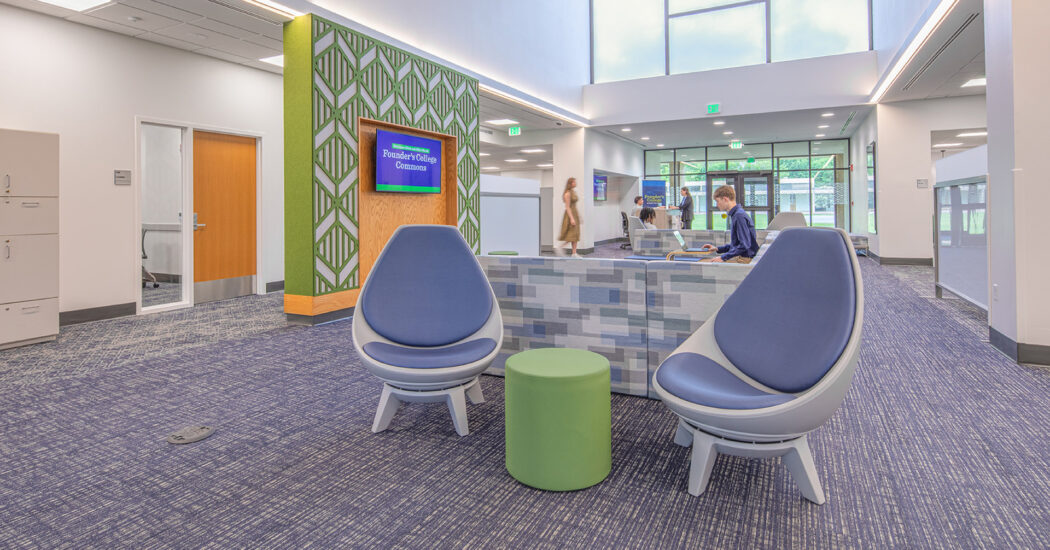Designing STEM Higher Education Spaces to Fuel Economic Growth
-
Category
Studio-Higher Ed, Innovation -
Posted By
Schmidt Associates -
Posted On
Oct 27, 2020
By Sarah Hempstead and Sara Richey
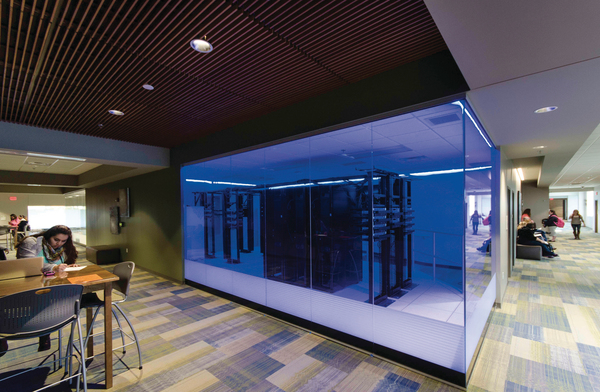
Creating and enhancing STEM programs, especially for engineering, is critical to developing the next generation of innovators. Feeding a pipeline of workers to support our local and regional communities is just a starting point.
Designing academic spaces for students in professional programs requires a tailored approach based in real-world workplace strategies. That approach becomes even more specialized when dealing with programs in STEM (science, technology, engineering, math).
Particularly for programs in engineering, the built environment plays a fundamental role. To understand the importance of getting these programs right, let’s start with some background.
STEM Programs are Critical Economic Drivers
Economic growth is largely reliant on sectors in STEM—and shortages can be devastating to our economy. According to Forbes, we are on the brink of a “STEM crisis like no other.” With not enough students in STEM higher education programs to fill the future need for their expertise, the United States is at risk of falling far behind other countries.
In addition to an overall shortage of STEM-educated students, underrepresented communities are historically absent from STEM fields.
Percentage Engineering Degrees by Race & Ethnicity
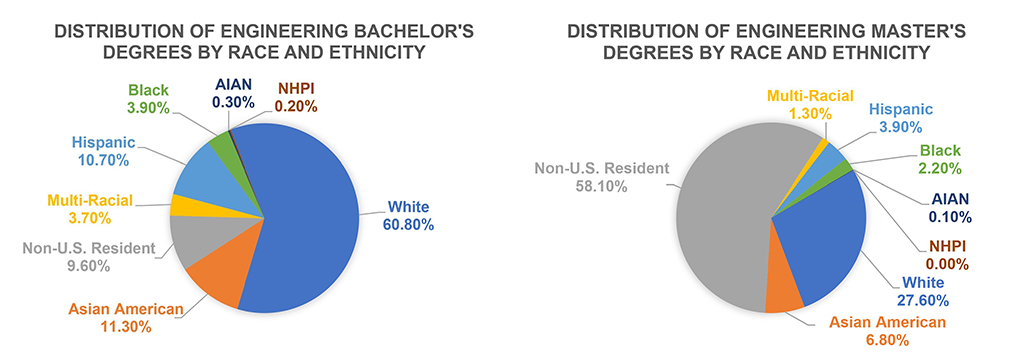
SOURCE: U.S. Department of Education, National Center for Education Statistics, Integrated Postsecondary Data Systems, Fall 2011 and 2016, Completions Component (Published in May 2018 Report on Engineering Education)
In Indiana, there is much work to be done, but early strides are being made. As of May 7, 2020, the Indiana Department of Education (IDOE) increased the number of STEM Certified K-12 schools to 90, a more than 16-percent increase from the prior year. As for higher education, according to the IDOE’s Office of Workforce & STEM Alliances’ 2018 six-year strategic plan, the state’s intent is to “highlight innovative STEM business and postsecondary partnerships.” IDOE council members include Lilly, Roche, Purdue, and Ivy Tech.
There is still significant room for growth. A change in our focus, including student outreach, education, and a laser focus on inclusion, can help close the gaps and create economic growth in the Midwest and throughout the country.
5 Emerging Trends to Consider When Designing STEM Programs and Facilities
1. Professional Accreditation
Acquiring and maintaining program accreditation is the key to offering a successful engineering, architecture, nursing, or medical program. Each professional accreditation has its own process and standards, including physical requirements. Be sure your design team knows the process and the requirements, and how “best practice” programs are exceeding them.
In addition, graduates should be on their way to their own professional licensure. As much as possible, your physical and programmatic assets should prepare new graduates for the office environment, connecting them to real-world experiences and underscoring the ethics and technical competencies needed.
2. Engaging Your Community, Starting with K-12
Engaging stakeholders in your community in both the public and private sectors is necessary to help expose students to STEM careers early. Programs like Project Lead the Way are popping up in K-12 environments, providing students exposure to engineering, architecture, and biomedical science.
How do we help all learners gain exposure to college campus programs and become familiar with careers with opportunities for higher wages? Purdue Polytechnic High School is a phenomenal model of integrating STEM from an early age. Enhancing STEM opportunities for youth within their own communities and forming strategic partnerships by engaging various stakeholders creates a pipeline to advance education and workforce needs.
Public and private strategic alliances with corporations, colleges, universities, and K-12 institutions can help pave the way for early adoption and degree and licensure completion.

Flexible classroom and STEM makerspace
3. Attracting Underrepresented Groups
Racial, gender, and socio-economic diversity is not only lacking in terms of those pursuing STEM degrees, but the percentage of these groups who go on to work in those fields and/or achieve their respective professional licensure after graduation is even smaller.
For example, according to the U.S. Bureau of Labor Statistics, of those employed in engineering and architecture occupations, only 15.7 percent are women, 9.2 percent are Hispanic or Latino, and 6.8 percent are Black or African American.
Increasing enrollment from traditionally underrepresented groups is a major opportunity for universities to improve the STEM pipeline and help move the needle on social mobility. The U.S. Bureau of Labor Statistics reports individuals with bachelor’s degrees have twice the earning potential as those without a high school degree, and students graduating with a STEM degree rank among the highest paid careers. In addition, studies show engineers who earn their professional certification make an average of $5,000 more a year.
Mobile labs, virtual classes, and short summer sessions help diminish the barrier to entry by providing low-risk, low-cost ways for students to test drive STEM fields. Creating attractive and comfortable physical facilities and resources, a welcoming environment, and a thriving student support infrastructure (including academics, mental health, and student life) can help attract and retain a diverse student population.
4. Leveraging Design to Advance Our Future
Evidence-based design is here to stay. Beyond the human component of education, the built environment plays a substantial role in stimulating success and improving outcomes to get students to the next milestone in STEM—whether that is retention, graduation, or workforce readiness.
Think about it: space shapes behavior.
Programming space properly helps us achieve multiple goals. Examples include:
- Using flexible furniture and whiteboards for “active learning,” group work, and collaboration
- Allotting space for focus work
- Designing for enhanced mental health
- Incorporating biophilic design
- Boosting natural light levels
- Improving indoor air quality by designing proper ventilation systems and increasing energy efficiency
We can apply these best practices in an engineering school environment in the following ways:
- Designing engineering labs to allow for “real-time” makerspaces
- Designing labs that allow for simulation and hands-on experiments
- Developing spaces for collaboration, privacy, and accidental interactions
- Creating multi-use spaces that allow for flexibility (well-designed spaces can accommodate various types of end users to occupy the space at any given time)
- Maximizing campus and building use for increased revenue (perhaps summer/year-round occupancy)
- Innovating by considering on-campus settings where co-op initiatives are formed with potential future employers
- Engaging with firms who know your business and design based on your priorities, not theirs
A full-service architectural and engineering firm with a specialty in higher education understands your academic environment and the evidence-based practices to support your mission. Working closely with a multi-disciplinary team fosters innovation and can save you time and money in advancing your program’s facilities.

Flexible, collaborative classrooms with tech integration and biophilic design considerations
5. Leading to Serve
“Servant leadership” is at the core of how we design and do business at Schmidt Associates. And it not only benefits our clients, but ultimately the populations they serve. Together with our higher education clients, when we lead by serving, we raise up our youth and adult learners, so everyone benefits.
Starting with the “why” and your mission allows us to formulate sustainable, strategic plans that serve as roadmaps for the future. By helping students gain need-based skills, we simultaneously serve their individual needs, our community, and our economy.





